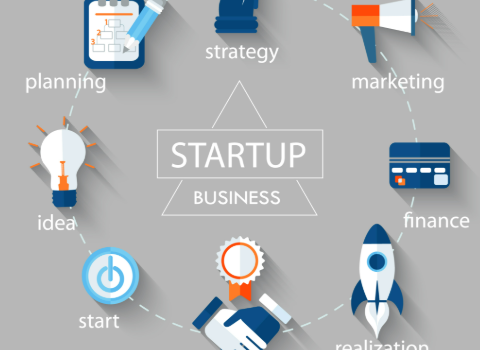
Starting a business without a well-thought-out plan is like embarking on a journey without a map. While passion and determination can give you momentum, they won’t be enough to overcome the challenges that come with building a successful startup. A strategic plan acts as the foundation for long-term success, providing you with direction, clear goals, and the tools to navigate obstacles. In this blog, we’ll examine why startups often fail without a business plan and how you can create one that sets you up for success.
The Importance of Strategic Planning
A strategic plan is more than just a blueprint; it’s your guide to achieving success. It offers several benefits:
- Clarity: Defines your startup’s vision, mission, and objectives, providing a clear purpose.
- Focus: Aligns your team toward common goals and priorities.
- Control: Helps you use resources effectively and mitigate potential risks.
- Flexibility: Prepares your startup to adapt when market conditions change.
Without a well-organized plan, many startups face disorganized efforts, wasted resources, and missed opportunities.
The Risks of Operating Without a Plan
- Lack of Direction
Without a clear plan, it becomes easy to lose sight of your objectives, leading to inconsistent decisions and wasted resources. - Financial Mismanagement
Without a solid financial framework, startups often overspend or underestimate costs, which can result in cash flow problems and halted growth. - Missed Opportunities
A lack of planning makes it more difficult to recognize and act on market opportunities, allowing competitors to take advantage of openings first. - Challenges in Securing Funding
Investors and lenders expect to see a clear, well-thought-out plan before they commit their funds. A detailed business plan demonstrates that you understand the market and have a viable path to profitability.
Key Elements of a Strategic Plan
- Vision and Mission
Define your startup’s core purpose and what it aims to achieve. This clarity helps unite your team and stakeholders. - Market Research
Gain a deep understanding of your industry, target customers, and competitors. This research will inform your product development, pricing, and marketing strategies. - Financial Projections
Outline your expected revenues, costs, and cash flow. These projections help you prepare for funding needs and potential operational challenges. - Strategic Goals
Break down your vision into measurable, actionable goals, and use key performance indicators (KPIs) to track progress. - Risk Management
Identify potential risks and develop contingency plans. This proactive approach allows your startup to stay resilient in the face of challenges.
How to Build Your Strategic Plan
- Start with Your Purpose
Clearly articulate why your startup exists and what problem it solves. This foundation will guide every aspect of your business plan. - Conduct a SWOT Analysis
Assess your strengths, weaknesses, opportunities, and threats. Use this information to craft strategies that capitalize on your strengths and address weaknesses. - Set SMART Goals
Ensure your goals are Specific, Measurable, Achievable, Relevant, and Time-bound. For example, “Increase online sales by 20% within the next six months.” - Map Out Financial Needs
Develop a detailed financial model that outlines startup costs, operating expenses, and revenue streams. Be sure to use accurate tools and expert advice. - Review and Adjust Regularly
A business plan isn’t static. Schedule regular reviews to assess progress, update goals, and adjust to changes in the market.
Case Study: Slick Gorilla’s Strategic Planning Success
Slick Gorilla, an e-commerce brand in the men’s grooming space, faced challenges in managing its rapid growth. Without a clear financial plan, the company risked overspending and missing key opportunities. Here’s how they turned things around:
Challenges Faced
- Difficulty aligning finances with growth goals
- Lack of visibility into long-term cash flow needs
- Trouble gaining investor confidence
Strategic Solution
By collaborating with financial experts, Slick Gorilla developed a robust five-year financial plan, which included:
- Comprehensive Financial Modeling: Mapping out revenue forecasts, cost structures, and growth scenarios.
- Optimized Cash Flow Management: Implementing systems to track and manage cash flow in real-time.
- Investor-Ready Projections: Creating financial reports that attracted investor buy-in.
- Scalable Budgeting: Balancing operational expenses with strategic investments to support growth.
The Results
- Sustained growth with a clear vision for the future
- Increased confidence from investors and stakeholders
- Expanded product offerings and market reach without financial strain
Slick Gorilla’s success story highlights the power of strategic planning. With a clear financial plan in place, they navigated growth challenges and secured their position in a competitive market.
Why You Need a Strategic Plan
Investing time and resources into creating a business plan offers several benefits:
- Confidence: Provides a solid foundation, ensuring you’re prepared for challenges and opportunities.
- Credibility: Builds trust with investors, partners, and employees, enhancing your reputation.
- Clarity: Keeps your team focused and aligned with your priorities, reducing the risk of diverging efforts.









